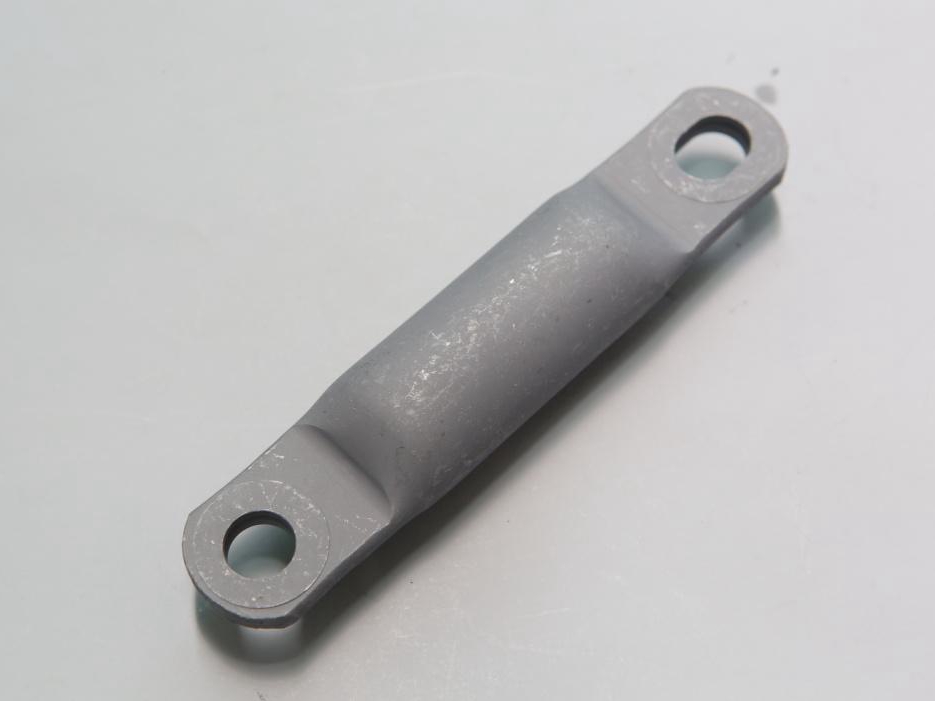Phosphating: A Key to Enhancing the Durability of CNC Machined Parts
Introduction
Phosphating is a chemical surface treatment process designed to improve the performance and durability of CNC machined metal parts, especially those made from steel, cast iron, and aluminum alloys. Forming a crystalline phosphate layer on the metal surface enhances corrosion resistance, improves paint adhesion, and reduces friction between moving parts.
Widely adopted in automotive, aerospace, defense, and heavy equipment industries, phosphating is ideal for CNC components with threaded holes, mating surfaces, and precision geometries where extended service life and superior coating performance are essential in demanding environments.
Phosphating Technology: Protective Crystalline Coating for CNC Metal Parts
Scientific Principles & Industrial Standards
Definition: Phosphating is a chemical conversion process that creates an insoluble, crystalline phosphate layer (2–20 µm thick) on metal surfaces. It enhances corrosion protection and lubricity and serves as a base for paint or powder coatings.
Governing Standards:
ASTM B633: Specification for phosphate coatings on ferrous metals
ISO 9717: Phosphate conversion coatings for steel
MIL-DTL-16232: Military specification for manganese and zinc phosphate coatings
Process Function and Cases
Performance Dimension | Technical Parameters | Application Cases |
|---|---|---|
Corrosion Protection | - Salt spray resistance: 72–240 hrs (ASTM B117) - Coating thickness: 2–20 µm | Automotive underbody parts, Military vehicle housings, Agricultural tool heads |
Improved Paint Adhesion | - Paint pull-off strength: ≥5 MPa - Uniform anchor profile | Powder-coated CNC parts, Chassis brackets, Aerospace mounting frames |
Wear and Galling Reduction | - Coefficient of friction: ~0.5 (dry) - Improved break-in for sliding components | Hydraulic pistons, Gears and shafts, Fasteners |
Dimensional Stability | - Controlled buildup: <20 µm - Consistent coverage over complex geometries | Threaded holes, Sliding joints, Precision brackets |
Phosphating Process Classification
Technical Specification Matrix
Phosphate Type | Key Parameters & Metrics | Advantages | Limitations |
|---|---|---|---|
Zinc Phosphate | - Thickness: 5–20 µm - Crystalline, grey coating | - Excellent paint base - Good corrosion protection | - Requires oil or paint sealant |
Manganese Phosphate | - Thickness: 8–20 µm - Micro-porous structure | - Superior wear resistance - Ideal for moving parts | - Higher coating weight, limited paint adhesion |
Iron Phosphate | - Thickness: 1–4 µm - Light, amorphous coating | - Low cost, fast process - Good for indoor protection | - Limited corrosion resistance |
Calcium-Modified Zinc Phosphate | - Thickness: 8–15 µm - Enhanced uniformity | - Improved fine-grain structure - Better coverage in small cavities | - Higher cost, requires tighter control |
Selection Criteria & Optimization Guidelines
Zinc Phosphate
Selection Criteria: Ideal for CNC machined parts that require post-treatment painting or powder coating and moderate corrosion protection.
Optimization Guidelines:
Maintain bath temperature at 70–90°C
Pre-clean parts with alkaline degreaser and acid activation
Apply oil or paint sealant to maximize performance
Manganese Phosphate
Selection Criteria: Best suited for CNC components exposed to friction, wear, or mechanical motion, such as gears, pins, and pistons.
Optimization Guidelines:
Operate baths at 90–100°C
Use controlled immersion times (5–20 min) for even coating
Apply lubricating oil immediately after rinsing
Iron Phosphate
Selection Criteria: Recommended for cost-sensitive CNC parts used in indoor or low-corrosion environments, especially where paint adhesion is critical.
Optimization Guidelines:
Perform at room temperature to 60°C
Ensure uniform spray or immersion application
Use a compatible primer or topcoat to extend service life
Calcium-Modified Zinc Phosphate
Selection Criteria: Preferred for precision CNC components requiring consistent micro-crystalline coatings and improved corrosion control in tight geometries.
Optimization Guidelines:
Strict control of calcium and accelerator content
Maintain pH between 2.8–3.2 for coating consistency
Rinse thoroughly and dry under controlled temperature
Material-Coating Compatibility Chart
Substrate | Recommended Phosphate Type | Performance Gain | Industrial Validation Data |
|---|---|---|---|
Zinc Phosphate | Enhanced corrosion & paint base | Passed 240-hour ASTM B117 test after topcoat | |
Manganese Phosphate | Superior wear resistance & lubrication | Validated in hydraulic piston applications | |
Iron Phosphate | Improved paint adhesion | Indoor equipment frames passed pull-off adhesion tests | |
Calcium-Zinc Phosphate | Uniform grain coating in cavities | Certified for engine block corrosion protection | |
Zinc Phosphate (with etch pre-treatment) | Enhanced bonding for powder coating | Automotive brackets tested for chip and peel resistance |
Phosphating Process Control: Critical Steps & Standards
Pre-Treatment Essentials
Degreasing: Alkaline cleaner at 50–70°C for oil and dirt removal Validation: Water-break test (ASTM F22)
Pickling: Mild acid dip (HCl or H₂SO₄) to remove oxides Validation: Surface energy test and pH monitoring
Phosphating Process Controls
Bath Chemistry: Maintain zinc/manganese concentration and pH within ±5% Validation: Titration and visual inspection for coating quality
Temperature Control: Consistent bath temperatures within ±2°C Validation: Continuous digital logging and bath turnover tracking
Post-Coating Enhancement
Rinsing: DI water rinse and optional final sealant dip Validation: Surface inspection for streaks or residues
Drying: Hot-air drying (80–120°C) to fix the layer Validation: Thickness and color uniformity verification (ISO 9717)
FAQs
How does phosphating compare to anodizing or plating for corrosion resistance?
Can phosphating be used on CNC components with threaded or tight-tolerance features?
What type of phosphate coating is best for moving mechanical parts?
Does phosphating affect the dimensional accuracy of CNC parts?
Can phosphated surfaces be painted or powder coated afterward?

